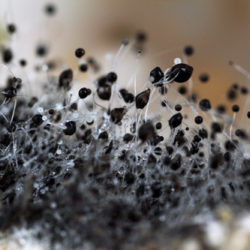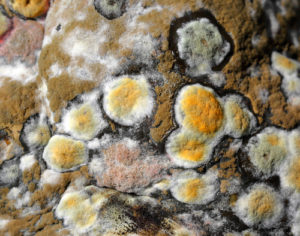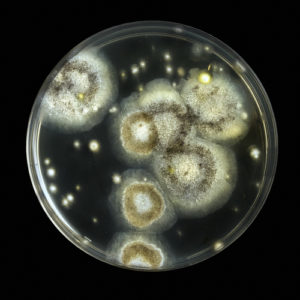What Are the Most Common Types of Mold?

There are more than 100,000 species of mold.
Just as the word “flower” encompasses thousands of different types of plants, there are more than 100,000 species that fit under the term “mold.” Here’s a look at the distinguishing characteristics found in some of the more common types of mold.
• Stachybotrys atra is the species that has come to be referred to as “black mold” due to its dark greenish-black color. While the mold itself is not toxic, it does produce mycotoxins that can cause a variety of health problems depending on a person’s sensitivity and length of exposure. Hidden black mold can sometimes be detected by its distinctive musty odor.
• Aspergillus is found both indoors and outdoors, so you inhale these spores every day, usually with no ill effects. This species, however, is a powerful allergic irritant, so individuals with allergies are susceptible to upper respiratory symptoms such as coughing and sinus congestion. People with lung conditions or weakened immune systems are vulnerable to a disease called aspergillosis.
• Cladosporium has a black pepper-like appearance and is often found in toilet tanks or on window sills. This variety of mold does not produce mycotoxins, but like aspergillus it can trigger upper respiratory distress in some people.
• Orange- or red-colored mold is usually found outdoors, where it serves to break down dead trees and other organic materials. Mold that appears white is generally in an early stage of development.
Rely on Stern Mold for Cost-Effective, Non-Intrusive Mold Remediation
Regardless of the species, our proprietary MoldExterm process removes mold more thoroughly and safely than traditional mold remediation. Contact Stern Mold today to schedule a free mold inspection for your NYC or northern NJ home.




